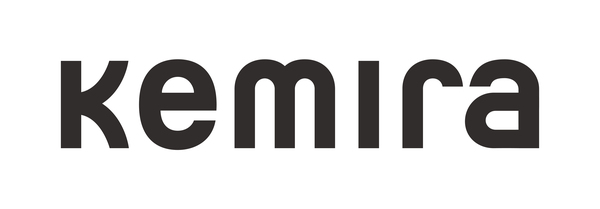Risks and limitations of conventional repulping aids
Handling wet-strength broke or recycled fibres with high wet-strength can be a challenging task. Conventional tools such as high mechanical shear, high temperature and caustic soda are not always sufficient to provide uniform fibre stock within a reasonable pulping time, especially for aged converting broke.
For difficult wet-strength papers, additional oxidative chemicals are required that can break down strong covalent bonds of a wet-strength resin. Sodium hypochlorite has historically been used to aid in repulping of wet-strength papers although its use is currently less desirable. Hypochlorite is a hazardous chemical that requires special handling. It is also a source of free chlorine, which can cause metal corrosion as well as contribute to AOX in paper and effluent. If the residual levels after repulping are not carefully controlled, the Cl carryover to the wet end can destroy some of the wet-strength resin and reduce its efficiency. High level of free Cl can also negatively impact Yankee coating and machine runnability. Due to its poor environmental and safety profile, the use of hypochlorite for repulping has been trending down, but surprisingly there are still many tissue manufacturers that use it. The upcoming changes in the AOX regulations will force tissue makers to look for alternatives, at least in Europe.
The EU Directive 2010/75/EU, coming into effect in September 2018, will reduce the AOX limit in effluent in the wet-strength paper production from 150 to 50 g/t of paper produced. Until recently, persulfate has been the only alternative chemistry. Various persulfate salts are available in the powder form. Their eco-profile is more favourable compared to hypochlorite (no Cl), yet with several drawbacks. The powder does not dissolve fast and the oxidation potential is lower compared to hypochlorite; therefore, it requires longer pulping times and higher temperatures. Caustic soda must be added to achieve the desired effect from persulfate, which causes alkaline yellowing of fibres. There have also been reports of a negative impact on Yankee coating performance.
We help customers improve their process efficiency, productivity and end-product quality

FennoSpec 9368 – a new eco-friendly repulping aid
Kemira has developed FennoSpec 9368 as an eco-friendly alternative to hypochlorite. This product is based on the sodium percarbonate chemistry and is supplied as a granulate, shown in Figure 1. The uniqueness of this chemistry comes from a combination of both alkaline and oxidative components in one product. The fast dissolving FennoSpec 9368 releases sodium carbonate and hydrogen peroxide into a solution. This brings both alkalinity (pH 9-10) and oxidative power to the system, creating favourable conditions for effective break-down of the wet-strength resin in paper. The key advantage of this chemistry is its superior eco-profile as it does not form any harmful residuals. Only water and sodium carbonate remain after repulping. Therefore, this product has no contribution to AOX and has every major eco- and regulatory approval. Other advantages of FennoSpec 9368 over persulfate include a faster dissolution, which helps reduce repulping time. Figure 2 demonstrates an increased repulping rate when the persulfate powder was replaced with FennoSpec 9368.
FennoSpec 9368 does not require additional caustic soda as it alone can bring pH to 9-10. When working with difficult fibres, e.g., aged converting broke or tetra pack recycled fibres, additional caustic soda could further boost the effect of FennoSpec 9368. This is demonstrated in Figure 3 showing the results from an industrial trial of FennoSpec 9368 against the reference persulfate chemistry.
A high temperature in the repulping stage is beneficial. The product will dissolve faster, and the peroxide will be more reactive. In general, a sufficient effect can be seen from FennoSpec 9368 above 35°C and pH 9.5 or higher. In general, the higher the temperature, the faster the reaction will be. The temperature requirements for FennoSpec 9368 are still lower than for persulfate powders, which require hot alkaline conditions, 70oC or above and pH 10 or higher.


Industrial experiences with FennoSpec 9368
FennoSpec 9368 has proven successful in repulping of not only tissue and towel grades, but also tetra pack, decorative papers or even labels. It naturally works well for repulping of converting broke. Under proper repulping conditions, FennoSpec 9368 reacts fast and can either shorten the repulping time or allow more difficult wet-strengthened recycled raw materials in the pulper. It may not bleach the pulp like hypochlorite but, thanks to the in-situ release of hydrogen peroxide, it will prevent alkaline yellowing of the pulp, unlike persulfate and other alkaline powdered products. A case study demonstrating the use of FennoSpec 9368 for wet-strength broke is shown in Figure 4.


Kemira
Kemira provides expertise and tailored combinations of chemicals for water-intensive industries. We innovate together with our customers for sustainable solutions where water meets chemistry.
We have unique expertise in applying chemicals and supporting pulp & paper producers to innovate and constantly improve their operational efficiency. We develop and commercialize new products to fulfil customer needs and to ensure the leading portfolio of products and services for paper wet-end, focusing on packaging and board as well as tissue.
Risks and limitations of conventional repulping aids
Handling wet-strength broke or recycled fibres with high wet-strength can be a challenging task. Conventional tools such as high mechanical shear, high temperature and caustic soda are not always sufficient to provide uniform fibre stock within a reasonable pulping time, especially for aged converting broke.
For difficult wet-strength papers, additional oxidative chemicals are required that can break down strong covalent bonds of a wet-strength resin. Sodium hypochlorite has historically been used to aid in repulping of wet-strength papers although its use is currently less desirable. Hypochlorite is a hazardous chemical that requires special handling. It is also a source of free chlorine, which can cause metal corrosion as well as contribute to AOX in paper and effluent. If the residual levels after repulping are not carefully controlled, the Cl carryover to the wet end can destroy some of the wet-strength resin and reduce its efficiency. High level of free Cl can also negatively impact Yankee coating and machine runnability. Due to its poor environmental and safety profile, the use of hypochlorite for repulping has been trending down, but surprisingly there are still many tissue manufacturers that use it. The upcoming changes in the AOX regulations will force tissue makers to look for alternatives, at least in Europe.
The EU Directive 2010/75/EU, coming into effect in September 2018, will reduce the AOX limit in effluent in the wet-strength paper production from 150 to 50 g/t of paper produced. Until recently, persulfate has been the only alternative chemistry. Various persulfate salts are available in the powder form. Their eco-profile is more favourable compared to hypochlorite (no Cl), yet with several drawbacks. The powder does not dissolve fast and the oxidation potential is lower compared to hypochlorite; therefore, it requires longer pulping times and higher temperatures. Caustic soda must be added to achieve the desired effect from persulfate, which causes alkaline yellowing of fibres. There have also been reports of a negative impact on Yankee coating performance.
We help customers improve their process efficiency, productivity and end-product quality

FennoSpec 9368 – a new eco-friendly repulping aid
Kemira has developed FennoSpec 9368 as an eco-friendly alternative to hypochlorite. This product is based on the sodium percarbonate chemistry and is supplied as a granulate, shown in Figure 1. The uniqueness of this chemistry comes from a combination of both alkaline and oxidative components in one product. The fast dissolving FennoSpec 9368 releases sodium carbonate and hydrogen peroxide into a solution. This brings both alkalinity (pH 9-10) and oxidative power to the system, creating favourable conditions for effective break-down of the wet-strength resin in paper. The key advantage of this chemistry is its superior eco-profile as it does not form any harmful residuals. Only water and sodium carbonate remain after repulping. Therefore, this product has no contribution to AOX and has every major eco- and regulatory approval. Other advantages of FennoSpec 9368 over persulfate include a faster dissolution, which helps reduce repulping time. Figure 2 demonstrates an increased repulping rate when the persulfate powder was replaced with FennoSpec 9368.
FennoSpec 9368 does not require additional caustic soda as it alone can bring pH to 9-10. When working with difficult fibres, e.g., aged converting broke or tetra pack recycled fibres, additional caustic soda could further boost the effect of FennoSpec 9368. This is demonstrated in Figure 3 showing the results from an industrial trial of FennoSpec 9368 against the reference persulfate chemistry.
A high temperature in the repulping stage is beneficial. The product will dissolve faster, and the peroxide will be more reactive. In general, a sufficient effect can be seen from FennoSpec 9368 above 35°C and pH 9.5 or higher. In general, the higher the temperature, the faster the reaction will be. The temperature requirements for FennoSpec 9368 are still lower than for persulfate powders, which require hot alkaline conditions, 70oC or above and pH 10 or higher.


Industrial experiences with FennoSpec 9368
FennoSpec 9368 has proven successful in repulping of not only tissue and towel grades, but also tetra pack, decorative papers or even labels. It naturally works well for repulping of converting broke. Under proper repulping conditions, FennoSpec 9368 reacts fast and can either shorten the repulping time or allow more difficult wet-strengthened recycled raw materials in the pulper. It may not bleach the pulp like hypochlorite but, thanks to the in-situ release of hydrogen peroxide, it will prevent alkaline yellowing of the pulp, unlike persulfate and other alkaline powdered products. A case study demonstrating the use of FennoSpec 9368 for wet-strength broke is shown in Figure 4.

Products
Adhesives, Aluminium sulphate, Anti-foaming agents, Anti-slime agents, Auxiliary chemicals for the paper industry, Bactericides, Biocides, Cleaning agents, Coating additives, Corrosion inhibitors, Deinking agents, Drainage agents, Dry strength improving agents, Emulsifiers, Fixatives, Flocculation agents, Flotations agents, Fungicides, Interfering substance control agents, Paper finish improvers, Pitch control, Resines, Retention agents, Sedimentation agents, Sizes, Sizing agents, Sludge dewatering agents, Surface finish improvers, Waste water purifying agents, Wet strength agents, Wetting agents, Wire conditioning agents, Wire life extenders .



